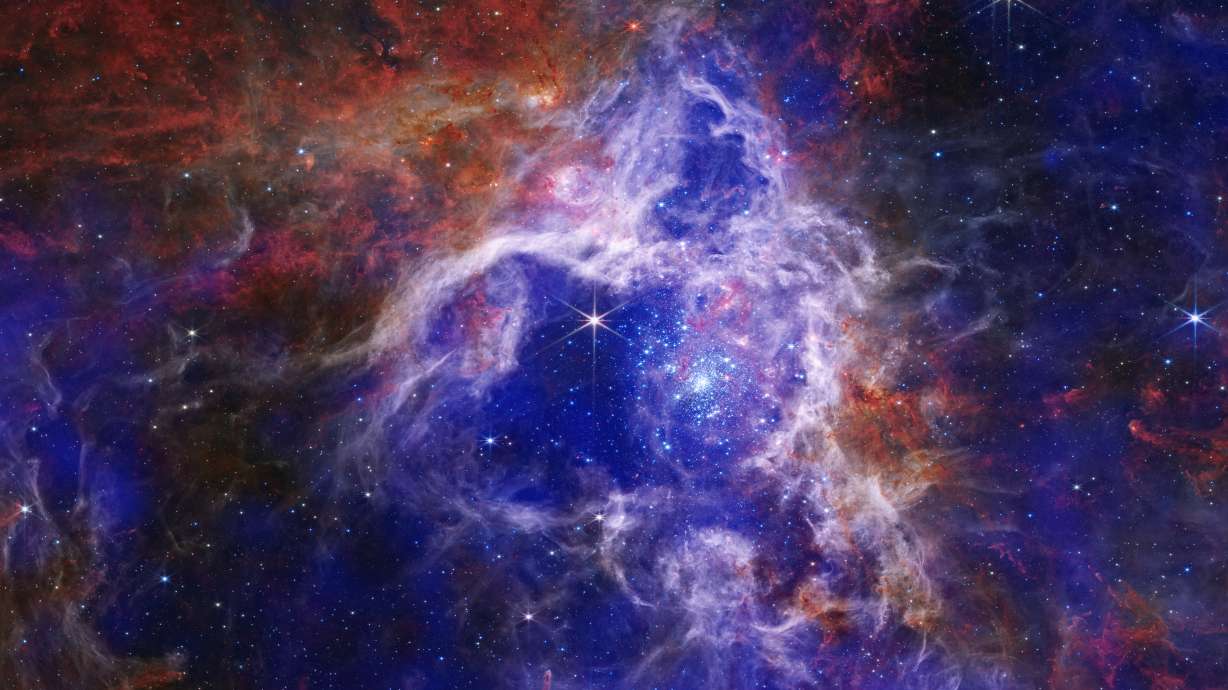Estimated read time: 4-5 minutes
This archived news story is available only for your personal, non-commercial use. Information in the story may be outdated or superseded by additional information. Reading or replaying the story in its archived form does not constitute a republication of the story.
OREM — While growing up as a kid who loved science, Joshua Lothringer never would have anticipated he would be part of a team that discovered carbon dioxide on an exoplanet sitting in space 700 light years from Earth.
"When you put it like that, it kind of gives me the chills, a little bit," Lothringer said.
Now an assistant professor in the department of physics at Utah Valley University, Lothringer joined a large group of over 100 other scientists as part of a collaborative, international planetary exploration team where he was tasked with determining if carbon dioxide was present on an exoplanet called hot Jupiter WASP-39b.
WASP is an acronym for "Wide Angle Search for Planets," which represents a group of international academic organizations that searches for planets using an array of telescopes.
An exoplanet, Lothringer said, is "a planet outside of our solar system." He said there are over 5,000 known exoplanets.
Adding to the experience was the fact that Lothringer got to utilize NASA's James Webb Space Telescope.
"It's not every day that you get a brand new space telescope like this," he said. "It's one of those things that happens maybe once or twice in a career, so you kind of cherish it while it's happening."
Lothringer and the team of scientists used the telescope, focusing it on a distant star and measuring its light over time, slowly watching it dim. If a star periodically dims, it can mean there is an exoplanet orbiting the star, casting a shadow as it orbits between the star and the telescope — as was the case with hot Jupiter WASP-39b.
"The observations get taken and within a few hours ... they get downloaded from the spacecraft," Lothringer said. "As soon as it hit the ground, people were already looking at it."
The human eye can not see an exoplanet through a telescope because the nearby star's light is too bright; however, scientists are able to detect them by tracking changes in the light spectrum from the exoplanet through the use of infrared cameras.
Lothringer's role was to determine if carbon dioxide was present on the planet, something he did using infrared cameras based on the same principles as night vision goggles.
According to a release from UVU, gases on an exoplanet absorb light in different combinations of colors, allowing researchers to determine the composition of the atmosphere. Carbon dioxide absorbs a red infrared light that the natural eye cannot see.
Using complex computer programs, Lothringer was able to document the light spectrum from the exoplanet.

"It took months to assemble and sort the data," he said, referring to finding the carbon dioxide. "It is a painstaking process because the wavelengths of the light are measured between 3 and 5.5 microns, and the data has to be exact. However, when all was said and done, it was thrilling to know that we have this ability and that we are contributing to a science that will hopefully someday lead us to habitable planets."
Lothringer said that hot Jupiter WASP-39b is like Jupiter in the sense that it's basically "a big gas ball" — a hot one, too, with its temperature coming in at approximately 1,600 degrees Fahrenheit, making it utterly uninhabitable.
Still, the discovery of carbon dioxide carries implications for discovering more planets, notably those that are habitable.
"This is kind of a first time that we were able to use this brand new telescope to see this kind of spectral feature we had never actually been able to because there hadn't been an instrument that could look that far into the infrared," Lothringer said. "But now we can with (James Webb Space Telescope) and we can apply it to, hopefully, exciting smaller systems."
As for his message to other young, aspiring scientists? Keep going and shoot for the stars, he says (sometimes, quite literally).
"I was interested in music and I almost just went and did music, became a record producer or something like that, because I was afraid of the math," Lothringer said. "Don't be afraid of how challenging it is — whether it's the math, or some other part of it that seems like a roadblock — you should always give it a shot if you can."
He mentioned that NASA is already thinking about the successor to the James Webb Space Telescope and has a concept called the Habitable Worlds Observatory that is still in the design process.
"That's going to launch in like 2040-something. So I could imagine some kid growing up right now could be in my exact same position for Habitable Worlds Observatory in a couple decades, which is kind of cool to think about," Lothringer said.









